Tag: industry
Relationships, certifications lead to 100% job placement for Diesel Technology program
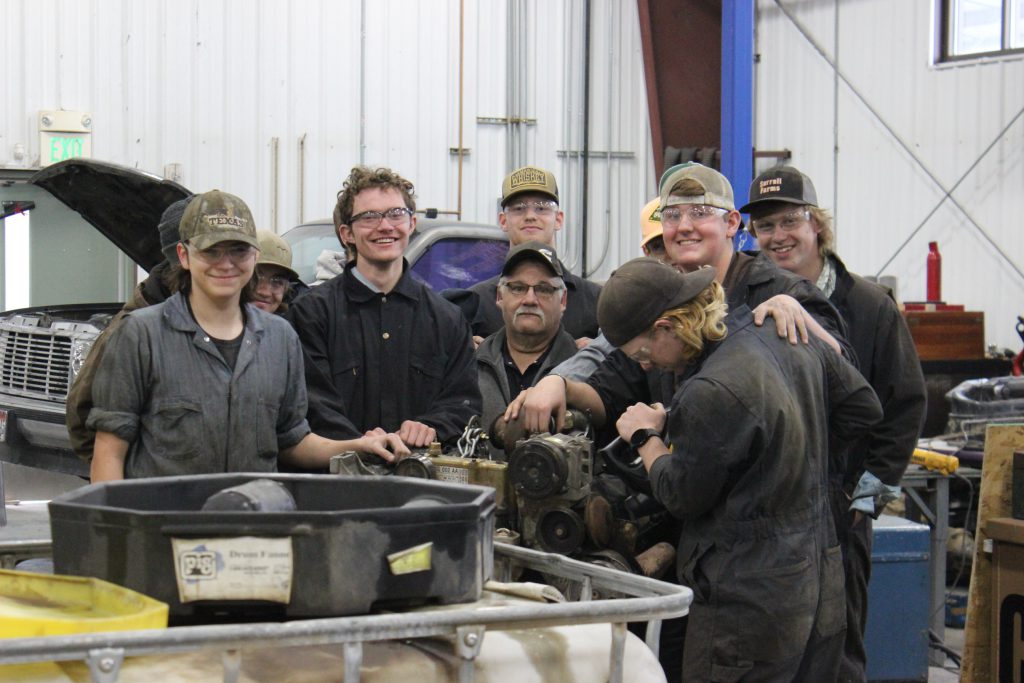
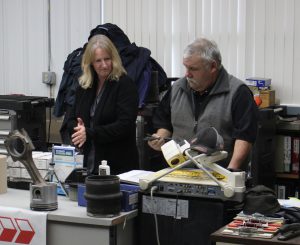
Diesel mechanic John Montana knows firsthand how difficult it is to find skilled workers, especially for in-demand professions. In fact, his inability to find and hire qualified workers is what drove him to become a teacher in the first place.
“I couldn’t hire decent help,” said Montana. “I was training new employees on the job anyway for about 10 or 11 years, so when Canyon-Owyhee School Service Agency’s (COSSA) old diesel technology teacher retired in 1999, I figured I’d give teaching a try.”
Though Montana started teaching part-time, he soon discovered he loved working with the kids and was teaching full-time by his second year. In the two decades since, Montana has cultivated relationships with about a dozen farm implement companies, several of whom employ Montana’s former students. These relationships benefit students and businesses alike—in many ways.
First, industry partners like John Deere, Kenworth, Peterbilt, Agri-Service, Caterpillar, and Mountain View Equipment are always willing to drop off equipment and provide opportunities for students to develop their skills via job shadowing and internships. They know they’ll be able to hire skilled workers from the talent pool Montana produces, so they’re willing to help his students develop career readiness skills by conducting mock job interviews or reviewing student resumes.
Second, industry partners provide additional feedback about new workers’ skills and what needs to change or be updated in the program to prepare students for their careers. This also helps ensure Montana himself stays current.
“That’s one positive thing about these kids staying local; they’re an excellent reference for me,” said Montana. “I don’t get to work out in the field like I used to, so I bounce stuff off my former students all the time. I know I can call any of them up and ask, ‘What have you run across?’ or ‘We’ve got this truck in here that’s doing this and this; have you seen anything like that?’”
Most importantly, these relationships have resulted in 100% job placement over the past 14 years.
“Because the program teaches to NATEF standards, students can earn industry-recognized certifications in electrical engines, transmissions, engine repair, brakes, and preventative maintenance,” said Montana. “Students can also earn their OSHA 10 card and SP2 Safety and Pollution Prevention training certificates while still in high school. That means students may not need a lot of on-the-job training after they graduate.”
This is a huge advantage to not only students but their employers as well.
“If there are 50 applicants for a job and you have these certificates—especially the safety certificates—you’ll move to the top of the list because it cuts down on the number of hours an employer has to train you, and you can get right to work,” said Montana.
Patricia Frahm
COSSA’s principal, Patricia Frahm, says the importance of this foundation can’t be overstated. “If a student walks out of a CTE program with these certifications, they can walk into a job immediately, and if they decide to go on to college, it gives them a skill they can use to pay their way through school,” said Frahm. “They also learn work ethic and accountability in the process—things that can help them for the rest of their lives.”
ISU robotics program prepares grad for career and promotions
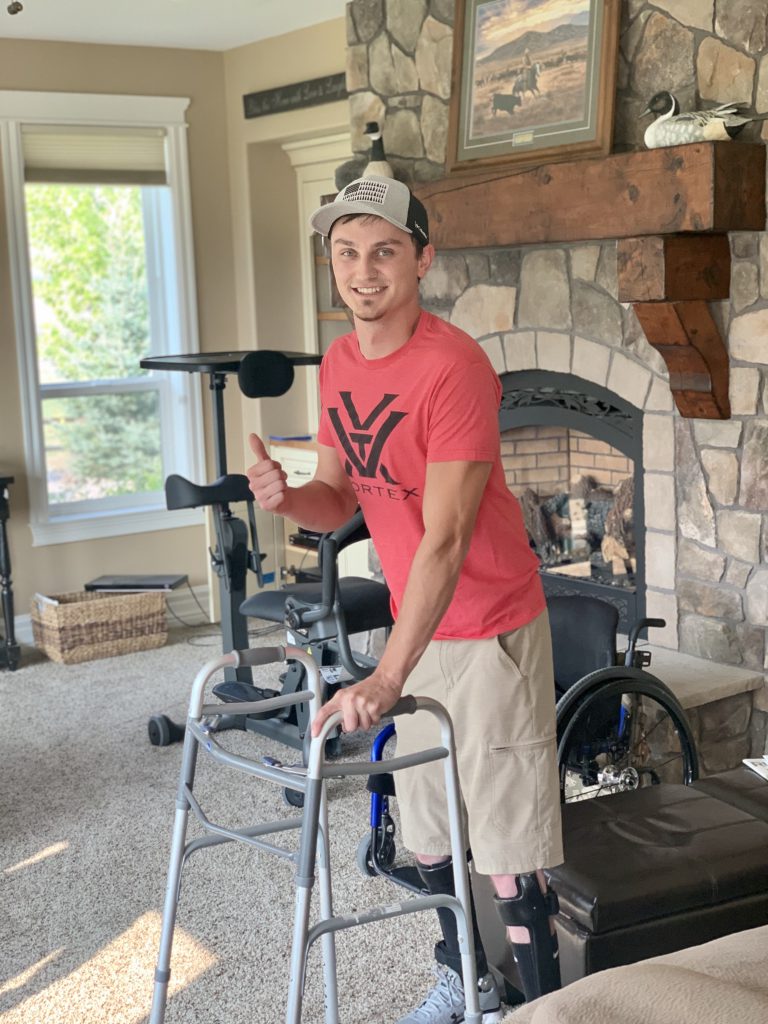

“The equipment I used at ISU is exactly what I use at Inovar. I felt they taught me what I really needed to know, and I didn’t have to learn on the job.”
Will Treasure
Treasure’s father, Dave, used to teach welding at ISU’s College of Technology, so he grew up on the ISU campus.
“My dad was always showing me programs at the College of Technology, and I always thought it was a cool place,” said Treasure. “I knew I needed a career where I didn’t have to lift anything, so my dad encouraged me to check out the robotics program.”
Instructors Shane Slack and Geran Call gave him a tour, and Treasure was hooked.“At first, I thought it was really nerdy, but the lab had interesting stuff like a real R2-D2, drones, and a 3D printer. The more I thought about it, the more I realized that robotics is part of everything. It’s in your phone; it’s in your car; it’s in anything electronic. I felt like the program could teach me to fix just about anything, and there was no shortage of job opportunities,” said Treasure.
The six-semester program did not disappoint.
“The instructors really know their stuff. One day, I was trying to figure out some coding. Shane looked at it and said, ‘That’s pretty good,’ but then he showed me some tips and tricks and I was able to cut the code in half.”
In addition to small class sizes, hands-on projects, accessible instructors and progressively more complicated coursework and projects, Treasure also appreciated the collaboration between other programs at the College of Technology.
“All of the trades and techs are really well put together,” said Treasure. “You see all the programs working together and willing to help one another.”
Treasure completed his degree in robotics and communications engineering systems technology in the fall of 2018—and he had a job lined up after graduation.
“Around the fifth or sixth semester, they encouraged us to start looking for jobs. Shane helped us with our resumes, and they were constantly bringing in potential employers for on-site interviews,” said Treasure. “It was really easy to find a job because these employers had such good experiences with previous graduates.”
Treasure accepted a position at Inovar in Logan, Utah, specializing in electronic manufacturing services for military and medical equipment. At first, Treasure worked as a service technician fixing boards at the component level. Thanks to the program at ISU, Treasure feels he was well prepared for the job.
“They expected so much out of us, and they always wanted us to do things the right way,” said Treasure. “The equipment I used at ISU is exactly what I use at Inovar. I felt they taught me what I really needed to know, and I didn’t have to go through so many hoops to learn on the job.”
The combination of being well-prepared for his career and passionate about his work led to Treasure being offered a promotion in November 2020.
“Drawing schematics at school and knowing how things functioned at work helped me get this promotion,” said Treasure. “I started at Inovar with another classmate. A lot of people asked us where we went to school because they wanted more employees like us. I have nothing but good things to say about my experience at ISU.”
Part-time teaching becomes full-time calling for Emmett teachers


“They’re not just learning how to use industry-standard design software; they’re also learning lessons about time management, problem-solving and working as a team.”
Susan Salisbury
When Susan and Rob Salisbury started teaching Career Technical Education in the Kamiah School District, their intent was initially to provide advanced opportunities for their four children.
“The smaller school districts just couldn’t afford those types of teachers,” said Rob. “The administrators came to us and asked what it would take for us to start teaching at the school. At first, we were doing part-time IT work and teaching just a handful of classes to provide an opportunity for those kids. But soon, we both discovered we thoroughly enjoyed working with students and watching them learn.”
The part-time teaching jobs soon became a full-time calling, and when Dr. Bill Knickrehm invited the Salisburys to move from Kamiah to Emmett to start the Payette River Regional Technical Academy (PR2TA) in 2010, they jumped at the chance, with Susan teaching the graphic design classes and Rob teaching pre-engineering.
Early on, the Salisburys were committed to providing hands-on instruction and collaborating with Emmett High School (EHS) and the community to give their students real-world experience. They were also committed to empowering students to be self-directed and accountable for their progress.
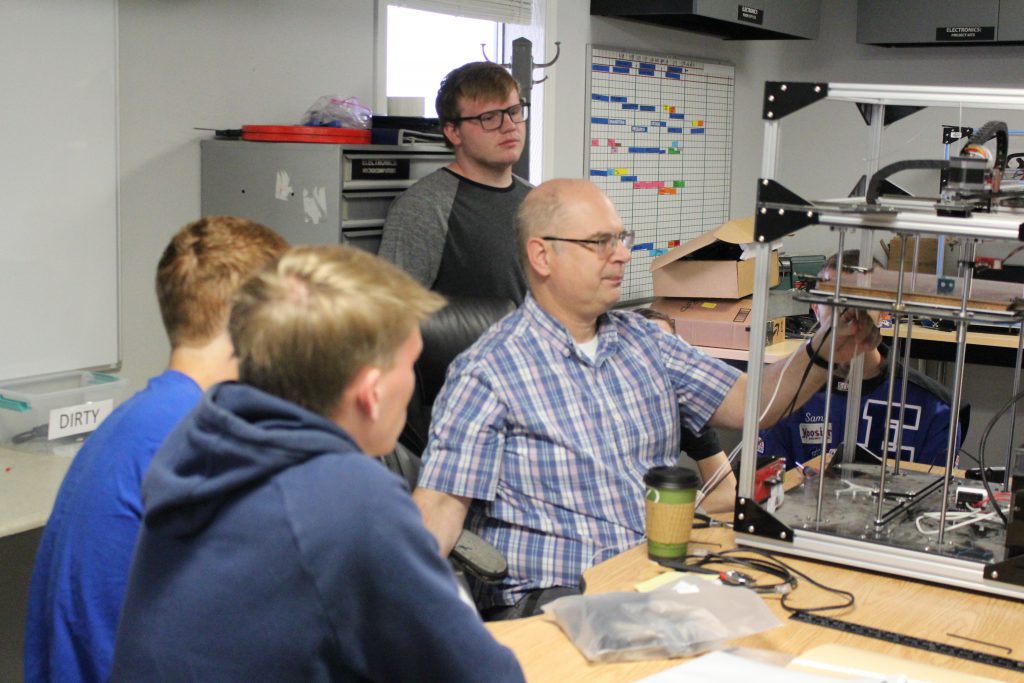
“They’re not just learning how to use industry-standard design software; they’re also learning lessons about time management, problem-solving and working as a team,” said Susan. “For example, my graphic design kids are completely responsible for laying out the EHS yearbook. The editor assigns stories and sets deadlines, not me, and the editor does daily round-robins to chart their progress.”
When PR2TA started, five of the classes were housed in mobile units on the EHS campus, and the engineering classes were held two miles off-site. Teachers and students had to get creative to ensure they could make the most of transportation time to and from EHS.
“We adopted the Agile methodology to review what we did the day before, and what we would be working on that day on the bus,” said Rob. “Students could also ask questions and troubleshoot, so when they arrived on-site, they were ready to work. And on the way back, we’d review what we did and discuss what we’d be doing the next day.”
Over a decade of dedication to quality instruction and real-world skills paid off during the 2018-2019 school year,* when both the graphic design and pre-engineering programs earned Distinguished status in IDCTE’s CTE program awards. Both programs had a 100% Technical Skills Assessments (TSA) participation rate, and a 100% pass rate for both the TSA and the Workplace Readiness Assessment.
Interest in what the Salisburys and other teachers at PR2TA were doing continues to grow, and so do their programs. In May 2020, the PR2TA board of directors seized the opportunity to purchase the old USDA building complex on Highway 16 and consolidate all the programs into one campus. Over the summer, all the PR2TA teachers worked together to assist with moving, painting and setting up classroom and lab areas.
“We are so proud of the efforts made by our teaching staff to ensure that face-to-face learning would take place beginning in August,” said Patti O’Maley, CTE coordinator for PR2TA.
Rob echoes O’Maley’s sentiment.
“We [the teachers] knew that every dollar we saved in moving and doing the work ourselves could go back into the programs, so we were only too happy to do so,” said Rob.
In fall 2020, six of the programs were moved to the new campus, and plans are in the works to remodel the kitchen to accommodate the culinary arts program and construct new buildings for auto shop, welding and agricultural science. An aviation-based curriculum is in the works, and a Cessna 150F was recently donated to PR2TA for future course offerings.
While coordinating schedules between activities at EHS and classes at PR2TA is still a challenge, students and teachers are loving the convenience of being located on the same campus—and the indoor plumbing.
“You take for granted things like not having to go outside to use the bathroom,” said Susan. “Or, we used to have to schedule meetings with other teachers, and now we can just pop down the hall.”
*Due to the coronavirus, no assessments were conducted during the 2019-2020 school year.
Industry connections and experience put north Idaho program on the map
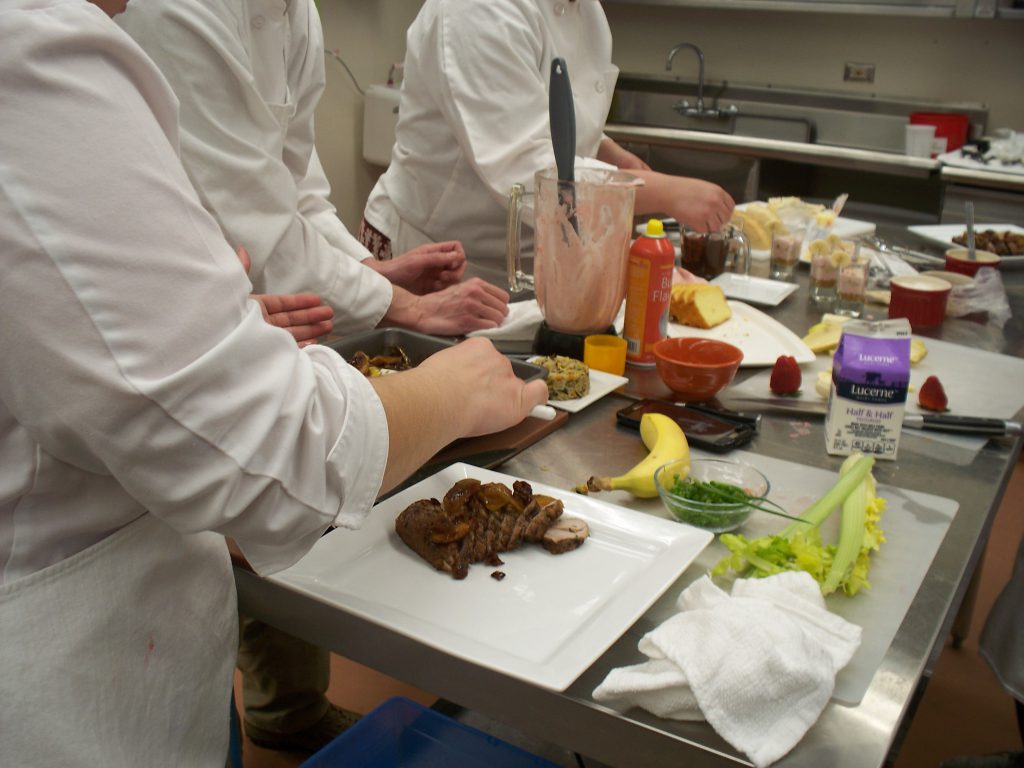

Rodney Farrington didn’t plan to teach hospitality management. But after ending a 28-year relationship with the hospitality corporation that employed him, the non-compete clause in his contract prohibited him from working in the industry he loved for three years.
“I had no idea what I wanted to do next, so my wife suggested I go back to Lewis-Clark State College (LCSC) and get an associate degree in hospitality management,” said Farrington.
After he graduated in 2012, Farrington opened a restaurant in Uniontown, Washington. He was content running his restaurant—until he received a phone call from LCSC asking if he’d fill in as an adjunct professor for the rest of the spring 2016 semester.
“Once I feel into the world of CTE, I understood how I could connect the industry I’ve been involved with my whole life with helping students get the skills and theory they need to start their own successful careers.”
Rodney Farrington
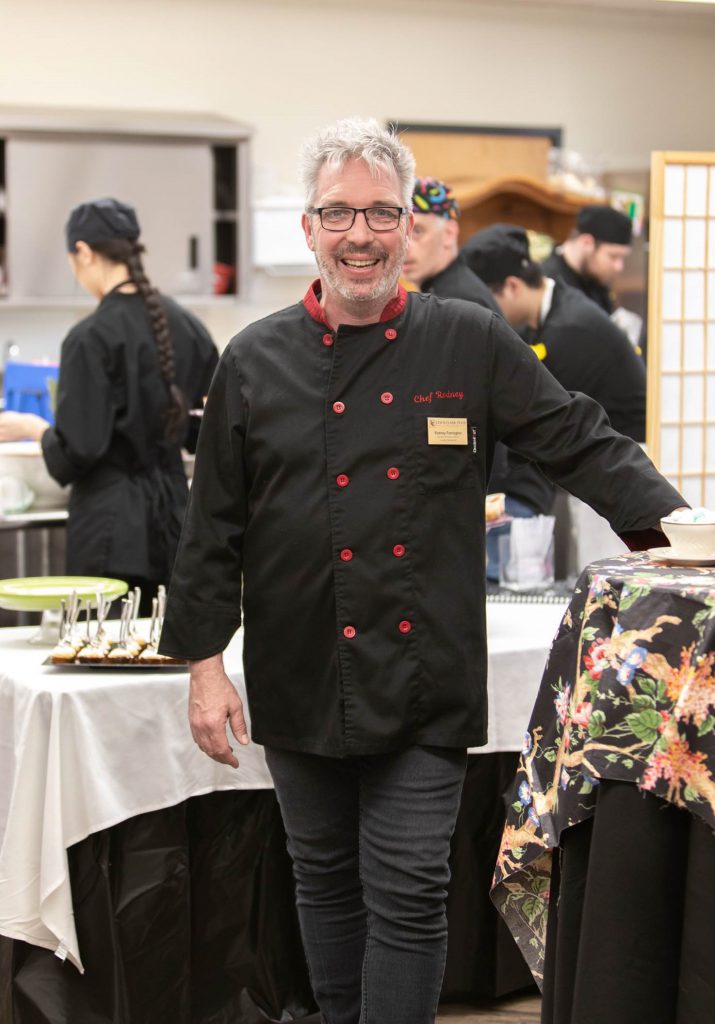
“The professor that taught me had quit due to health reasons, leaving two students with no professor to help them complete the program,” said Farrington. “I never in my life thought of myself standing in front of a class imparting my wisdom on the students. I just did it for the experience; I thought it would be nice to have those two classes on my resume, but I ended up absolutely falling in love with the job.”
Five years later, Farrington has taken what his predecessor had on file and added his own twist to it. Initially, he removed the classes he didn’t think were relevant and created a true hands-on connection to industry for each class.
“Once I fell into the world of CTE, I understood how I could connect the industry I’ve been involved with my whole life with helping students get the skills and theory they need to start their own successful careers,” said Farrington. “I only get them for two years. To the best of my ability, I want to create a real-life connection to what they’ll experience in the industry. That’s why I have them complete a project-based learning outcome in each course.”
Examples of Farrington’s hands-on approach to education include planning a trip around the world in Introduction to Hospitality, creating a business plan for a food truck in Hospitality Managerial Accounting, and designing a restaurant from the ground up in Food and Beverage Management.
“That entails designing a menu, understanding the pricing structure, using desktop publishing applications to design the menu, and presenting the concept to ‘investors,’” said Farrington. The “investors” include bankers, investors and financial planners affiliated with the industry who serve on Farrington’s Technical Advisory Committee (TAC).
“Money spent on training and recruiting is one of the largest expenses employers incur,” said Farrington. “The people on my TAC say they would far rather hire someone who has a good understanding of what the job looks like day in and day out and invest in them than train someone from the ground up and risk high turnover rates.”
It was the desire to reduce turnover that brought Farrington to McCall’s Shore Lodge in 2017. Because of the work Farrington did redesigning his classes—and the partnerships and connections he built in the process—he was invited by the Albertson Foundation and the A. L. Scott Foundation to discuss ways to reduce turnover and improve employee retention at the Shore Lodge.
“They lose almost half of their employees when students go back to school in the fall. They came to me looking for a way for student employees to stay on-site while completing their CTE-driven education,” said Farrington.
After hearing the Shore Lodge’s concerns, Farrington developed a program he calls online, on-site industrial education (OIE). Under his model, the employer provides pay, possible packaged amenities like meals and lodging, and any other additional benefits while the students work on-site getting hands-on, industry-driven training, and completing their degrees. Upon graduation, employers can offer tuition reimbursement as a job perk for every year that student stays on. Farrington has one student piloting his OIE concept this semester.
“For each class, we have to identify specific benchmarks with each student and their supervisor to verify what they’ve accomplished and document that they’ve done sufficient work to earn the degree,” said Farrington. “For example, in the Food and Beverage Management, we can connect the theory of inventory control with evidence of inventory control in practice on the job.”
The Shore Lodge is excited about the prospect of using Farrington’s OIE model in practice, and the Sun Valley Resort has expressed an interest in OIE, too. Farrington is excited about what the model can mean for Idaho’s hospitality industry and his students.
“With Idaho being the number one state people are moving to, hospitality and tourism are growing. I truly believe Idaho could be the forerunner in the new, post-coronavirus version of hospitality, travel and tourism education. I want this to become a small, boutique hospitality management program for those up-and-coming celebrities in the field,” said Farrington.
 Official Government Website
Official Government Website